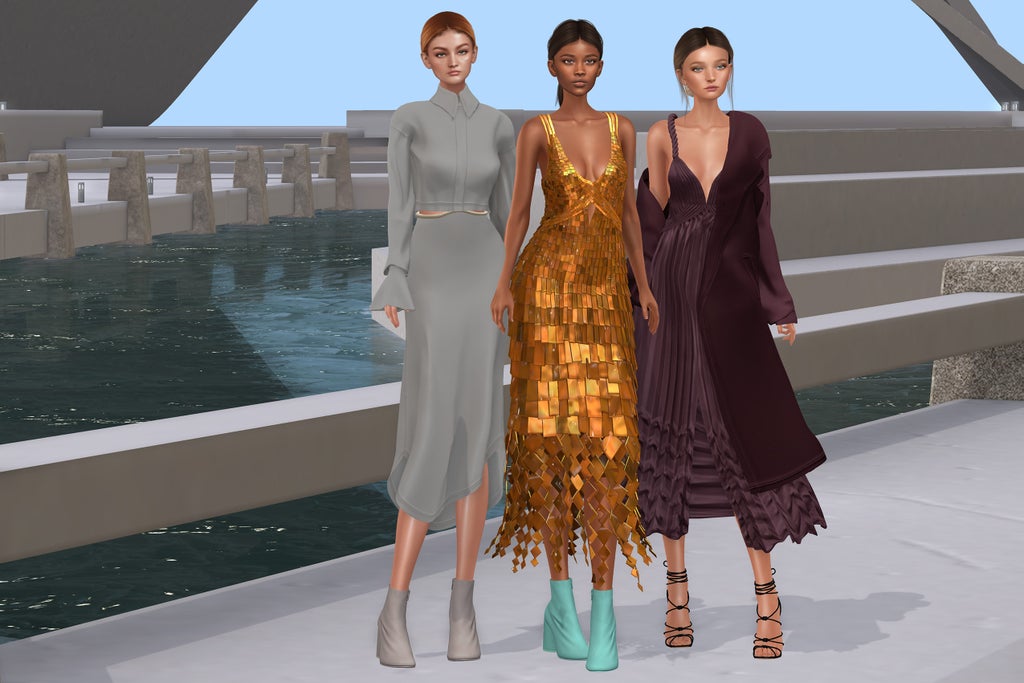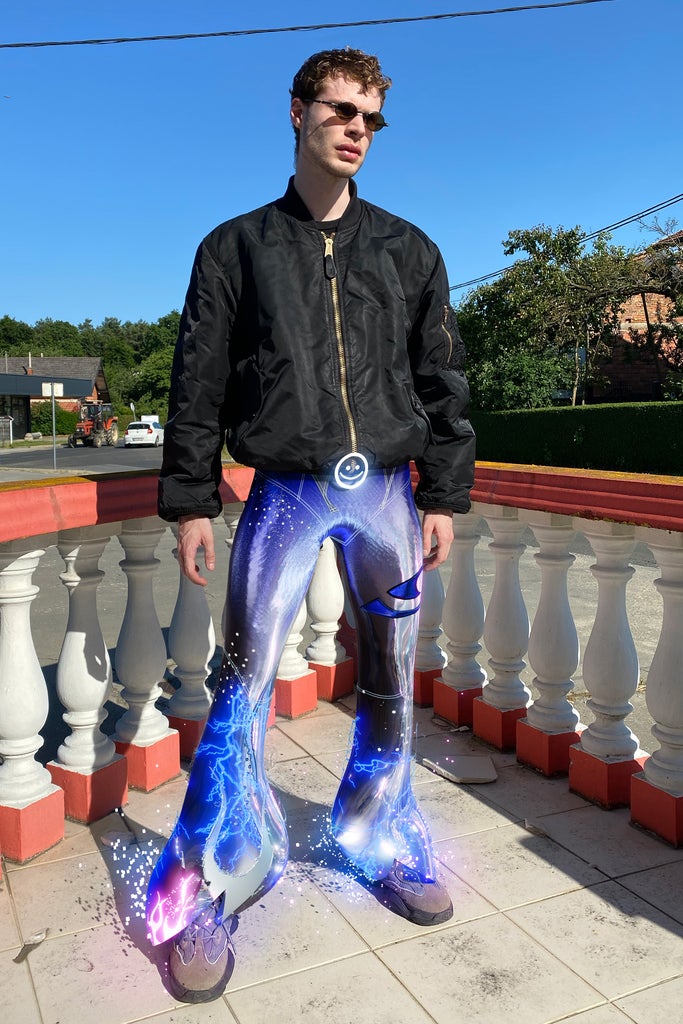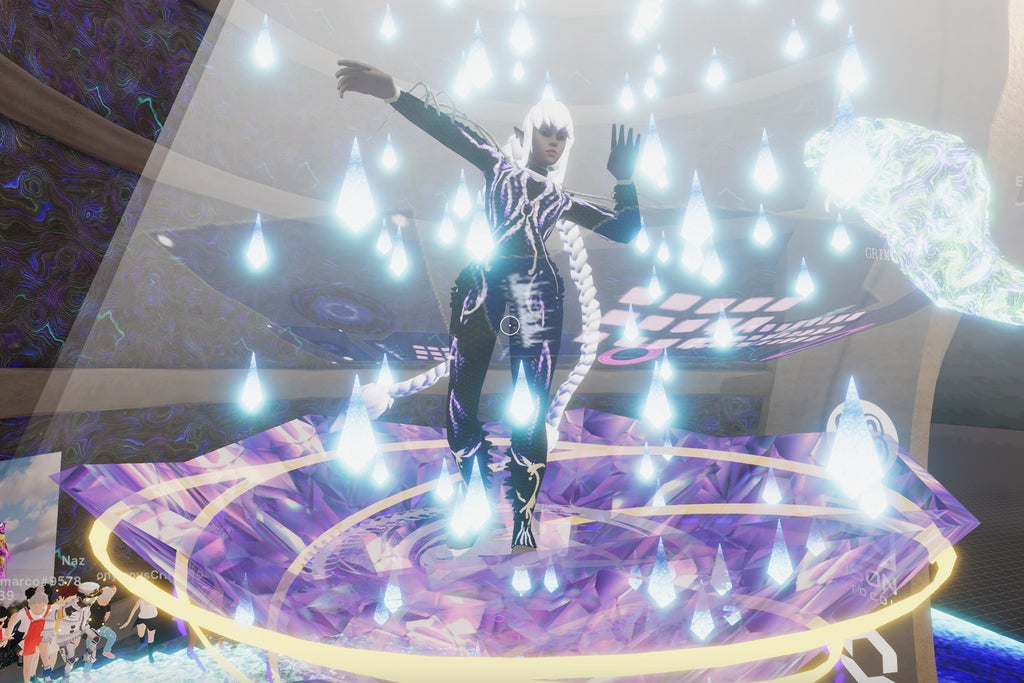Over the past few years, fashion’s transition into the digital landscape has rapidly accelerated. Earlier this year, the industry celebrated the first-ever Metaverse Fashion Week, and designers have also jumped on the Web 3.0 transition to showcase their IRL collections. Thanks to the fast-growing communities in gaming and the metaverse, digital clothing looks poised to become just another part of our ever-evolving wardrobe.
“I think it is in a really unique place of growth and transformation,” says Simone Berry, 5Crypto’s chief strategist and innovation director. “There’s a mind shift happening where people are understanding that clothing doesn’t have to be physical to be valuable.”
Digital clothing platforms have developed unique ways for people to interact with fashion online, from buying wearables to investing in non-fungible tokens (NFTs). Take, for example, DressX, a marketplace where people can buy digital clothing that can be superimposed over real-life photos; or The Fabricant, where those interested in NFTs can create and shop for them using cryptocurrency. Whichever way you go about it, one thing is clear: you’re not alone in wanting to buy digital fashion. A recent study, titled “The Screenwear Paper,” by Virtue, the in-house insights agency at Vice Media Group (Refinery29’s parent company) revealed that 95% of those surveyed say they are interested in buying digital fashion.
Before you open your blockchain wallet or try on some digital clothes, read through Berry’s answers to a few key questions worth considering prior to building your Web 3.0 wardrobe.

What Is Digital Fashion?
Digital fashion is still in development, according to Berry. So it’s important to note that not all digital fashion is created equal. There is a vast difference between digital wearables, which are clothes that an avatar — also known as your digital twin — can sport inside a game or a metaverse platform, and fashion NFTs, which are limited collectibles bought through cryptocurrency. There is also the option of buying digital clothes that can be superimposed over real-life photos of you.
While these options are not available to wear in the real world, Berry says that’s one of the main attractors for people. “Let’s be honest; most of us are wearing clothes nowadays to flex,” she says. “So with technology, you can still wear it, you can still flex.”
Digital fashion is also known for being edgier than real-life clothing. Due to physical limitations, designers are often forced to stay within a certain creative margin when designing IRL. But when clothes are made digitally, it’s a different story. “I personally feel like it’s more futuristic,” says Berry. “It’s a fantasy and designers obviously are drawn to that.”
How Do I Buy Digital Fashion?
There are two types of transactions when it comes to buying digital fashion: “on-chain” and “off-chain.” For “on-chain” transactions, Berry says that users are required to open a cryptocurrency wallet inside the platform, so the clothing can become a digital asset for them to own. For “off-chain” transactions, users can pay with a regular credit card.
“[The Web3 community] all accepted that it’s going to be a much longer educational map before everyone is going to be ready to adopt it,” says Berry.

Where Do I Buy Digital Fashion?
Digital fashion marketplaces are one of the best ways to get in the game. Take, for example, Zero10, a platform where you can try on digital clothes, make purchases, and use them to create social media content. There’s also DressX, which allows you to upload real life photos for the clothes you purchase to be imprinted on. Other marketplaces, like The Dematerialised, are focused on selling fashion NFTs, which are stored on your digital wallet, making them a traceable asset.
These platforms have a wide set of clothing available, from digital-first houses, like The Fabricant and Auroboros, to NFTs created by IRL-first designers like Rebbeca Minkoff and Jonathan Simkhai.
“The greatest thing about Web3 is that it’s about collaboration,” Berry says. “It’s not about just selling things. It’s about creating something for your community.”

How Much Does Digital Fashion Cost?
One of the most attractive features of digital fashion, according to Berry, is its affordability. While many of early digital fashion drops were auctioned off for thousands of dollars — The Fabricant’s first-ever drop sold for over $9,000 — today digital fashion is becoming more affordable. Berry also points out that consumers should look at affordability in this space in two categories: fashion NFTs and digital wearables. “If it’s an NFT and it’s a certain collaboration that’s very different, it can be more expensive,” she says.
But digital wearables can be more accessible. On DressX, T-shirts can go for $14 and pants for $20, while on Replicant, the same items can go for as low as $6. If you’re looking to add some couture-level drama to your digital wardrobe, there are options more affordable than IRL clothing, too. Take Tribute Brand, a digital-first couture house that operates on limited-edition drops, which has voluminous, sci-fi dresses going for $150.
While digital clothing is still in its infancy, Berry says that there are exciting innovations happening in this space that will allow consumers to interact with fashion in other ways beyond wearability. “We’re trying new things. Nothing is set,” she says.
Like what you see? How about some more R29 goodness, right here?
Are Digital Clothes More Sustainable?

No comments:
Post a Comment